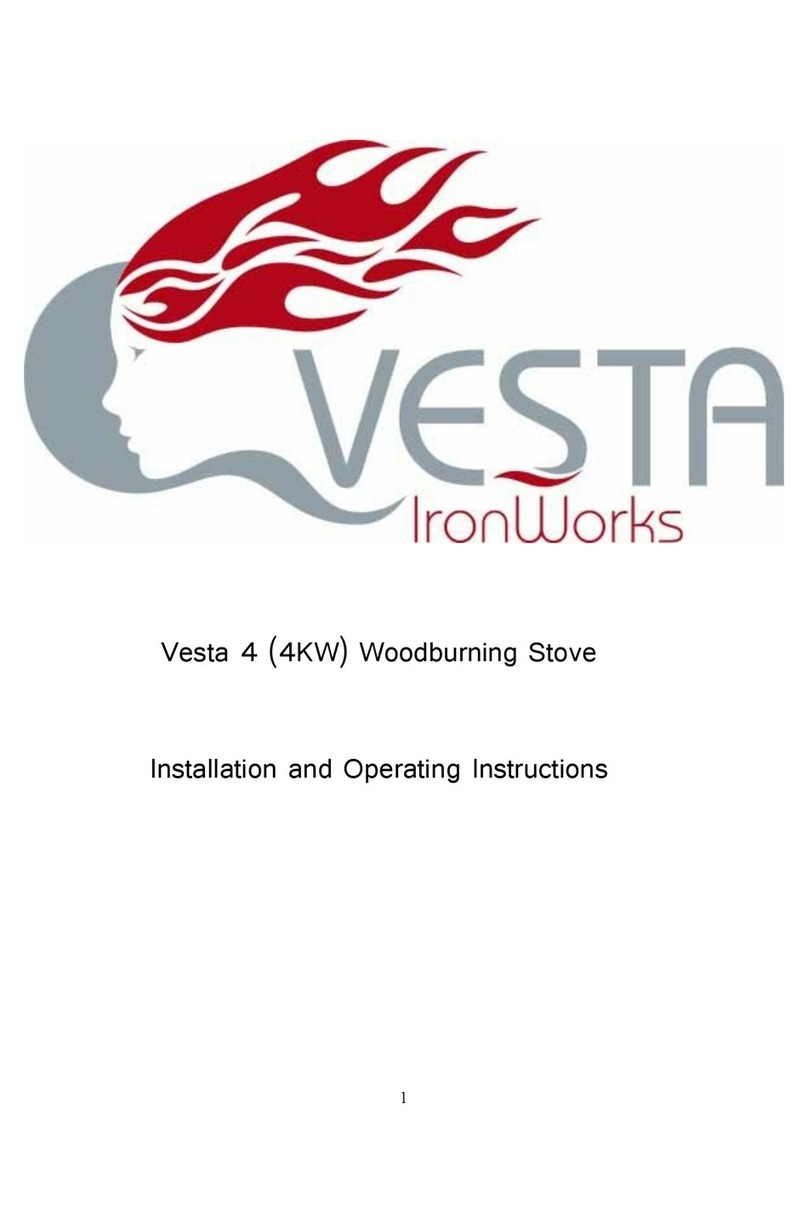9
open the top air control the more eecve the air shield system.
Use a piece of newspaper to wipe the inside of the window glass be-
fore lighng the stove each me to prevent the gradual build up of
deposits.
Small, hot res are more ecient than large slumbering res. Most
of the energy in burning wood is released as a bright ame. The tur-
bulence in the ames creates good mixing between the combuson
air and the gases that are released from the wood as it heats up. The
heat of the re ignites and burns these gases. In contrast, the dense
smoke from a slow, smouldering re is potenal heat energy that es-
capes up the chimney and either clings to the chimney ue as creo-
sote or pollutes the outdoor air. Therefore, to gain the most heat
from each load of rewood, the wood should be aming throughout
the burn cycle unl it is reduced to ash.
If you do a fair bit of slow woodburning, it is good pracce to burn a
good, hot stove at regular intervals to keep your chimney dry and
prevent the build up of tar.
When refuelling, place wood towards the back of the stove where it
will burn hoer and more eciently. Try to place logs length ways so
that any sping from the end grain does not go onto the glass win-
dow. The fuel should not be stacked higher than the top of the back
re brick. Once the stove is hot and running steady, it should be pos-
sible to maintain the nominal output by refuelling approximately
once an hour.
Notes on woodburning
Wood burns most eciently when the air for combuson is supplied
from above the re bed rather than below. The air supplied above
the re bed provides the oxygen necessary for the volale gases
(smoke), given o by the wood as it heats, to combust. This ensures
that the gases are burnt and used to heat the appliance instead of




























